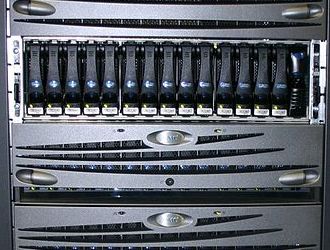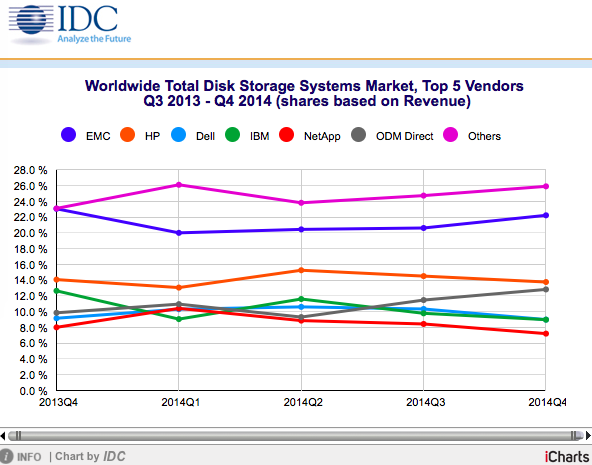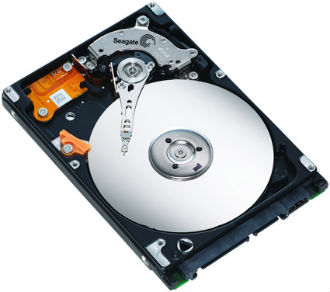 IDC said that the storage market ended well. In the last quarter, worldwide enterprise storage systems revenue grew 7.2 percent year on year to amount to close to $10.6 billion.
IDC said that the storage market ended well. In the last quarter, worldwide enterprise storage systems revenue grew 7.2 percent year on year to amount to close to $10.6 billion.
And capacity shipments rose by 43.7 percent compared to the same quarter the previous year to represent 99.2 exabytes.
Eric Sheppard, a research director at IDC, said spending on enterprise storage grew in most markets worldwide with factors including demand for midrange systems using flash memory and systems designed for hyper scale data centres.
EMC was the top dog in fourth quarter, with a 22.2 percent market share. That company was followed by HP (13.8%), Dell (9%), IBM (9%) and Netapp (7.2%).









